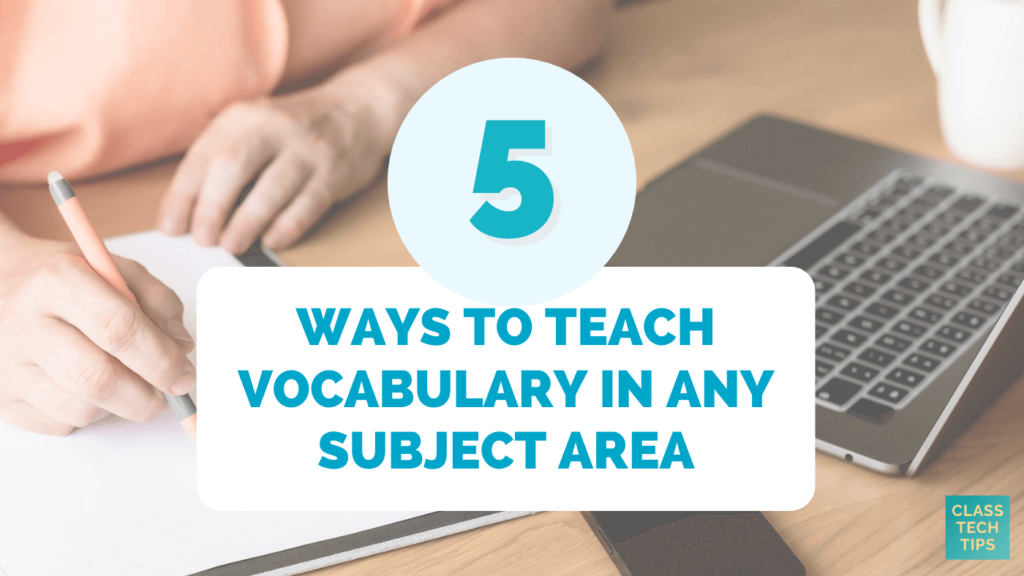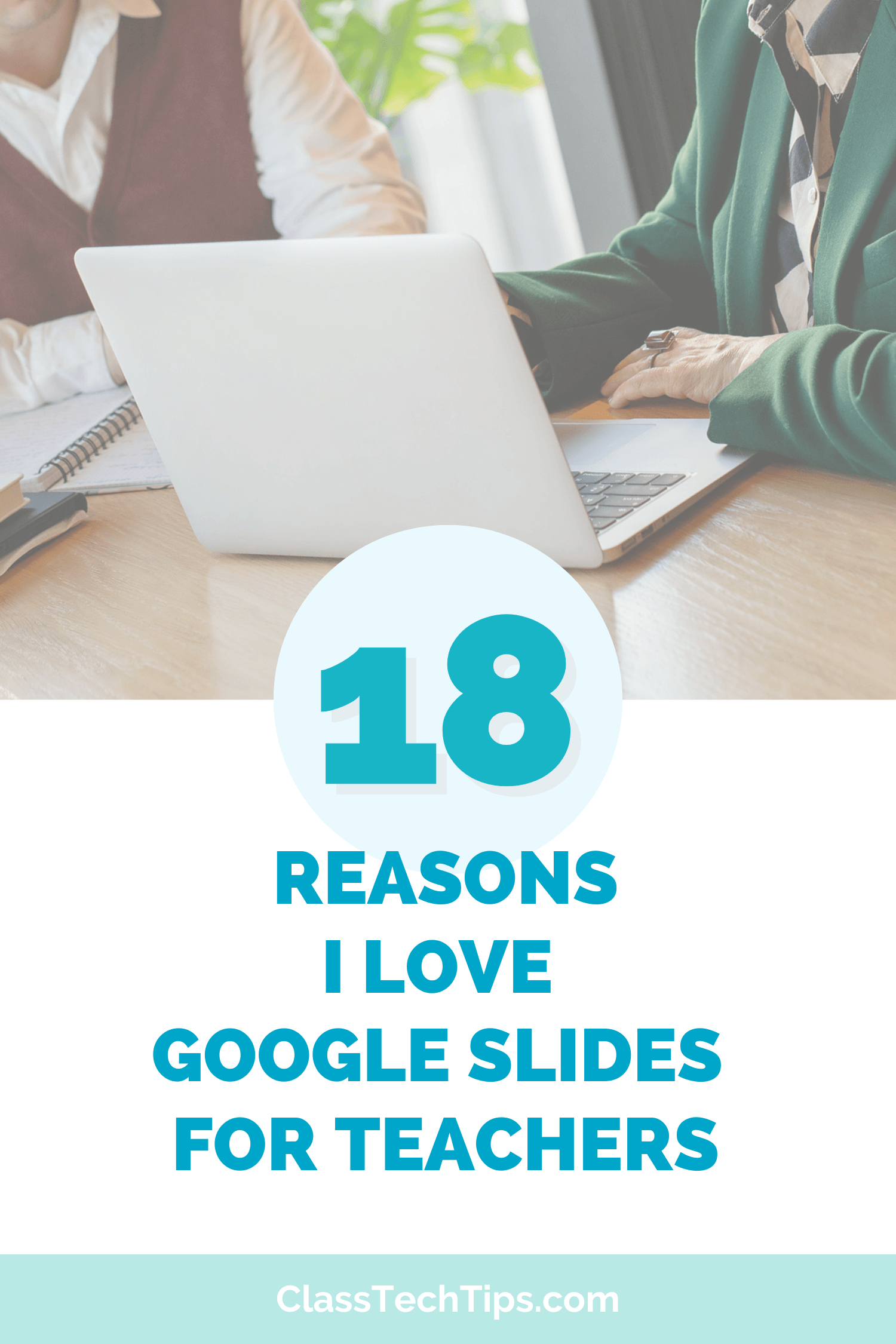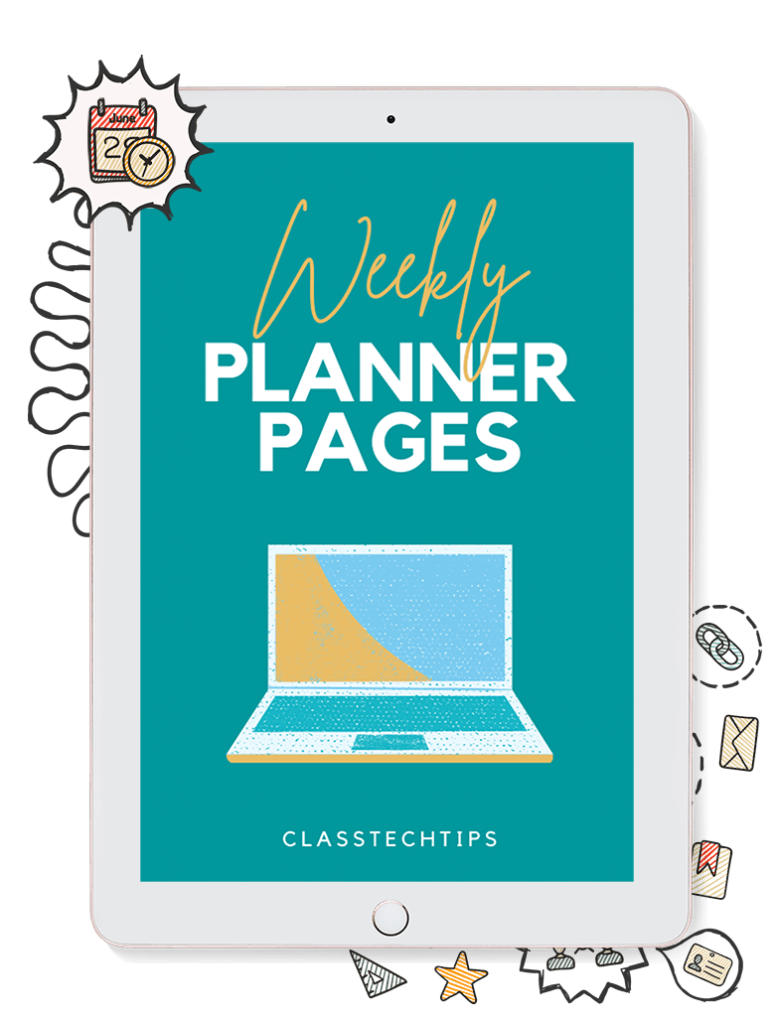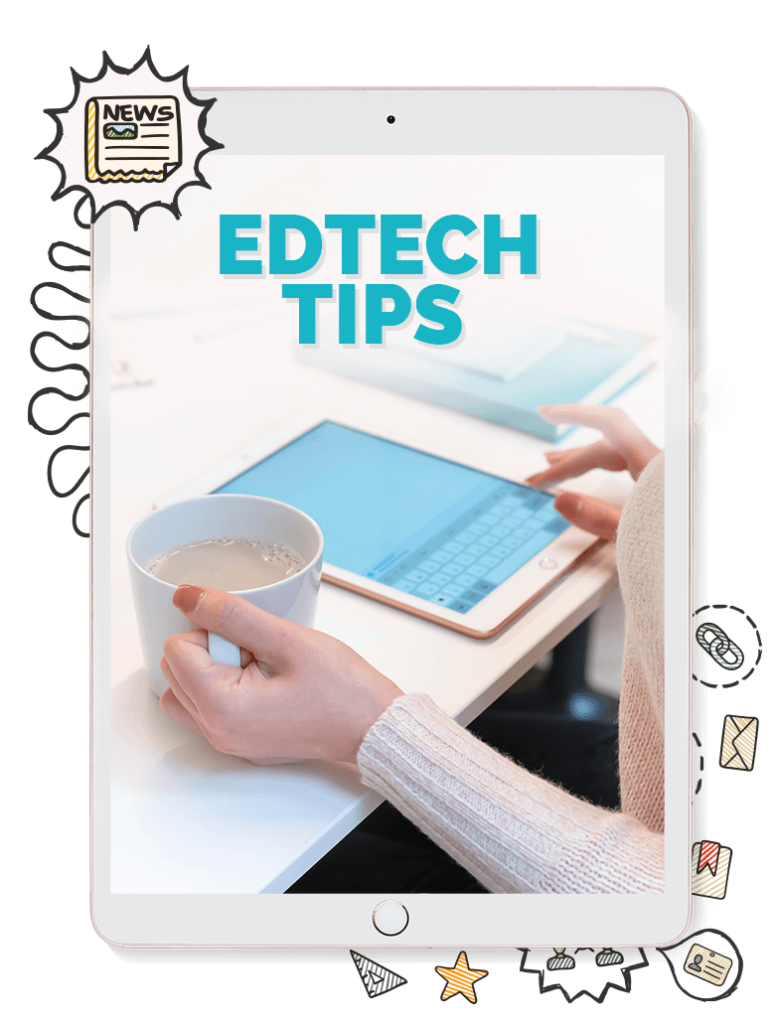How do you teach vocabulary in your classroom? Vocabulary acquisition is essential for student success in every subject area. It’s not just about hearing or being exposed to new words—it’s about actively practicing them and using them in a variety of contexts. When students engage with vocabulary in multiple ways, they build a deeper understanding of new terms. They improve their ability to recall and apply them in real-world scenarios.
Teaching vocabulary effectively helps students strengthen their communication skills and comprehension. Of course there are lots of ways to leverage EdTech tools to help make this happen. Today on the blog, we’ll take a look at strategies for incorporating interactive and engaging strategies into classroom instruction to teach vocabulary in any subject area.
Teach Vocabulary in Any Subject Area
When students develop strong vocabulary skills, they gain confidence and independence as learners. Vocabulary instruction is essential across all grade levels and subject areas. You may have a list of words you want students to better understand, or you might find yourself reviewing formative assessment data and making observations about how to best teach vocabulary words to your students.
What does this look like in different subject areas? In science, students need to understand terminology related to different processes and concepts. This could include vocabulary words such as “photosynthesis” or “gravity.” In a social studies classroom, students encounter historical and geographical terms that shape their understanding of events and places.
During math instruction, students may need to wrap their heads around very specific definitions like “denominator” and “quotient.” If you are teaching English Language Arts, the vocabulary you teach for reading comprehension and writing can vary greatly from one grade level to the next. Teaching vocabulary intentionally ensures that students can meet content-specific standards and engage meaningfully with complex texts and ideas – in any subject area.
5 Ways to Teach Vocabulary
On this list, I’ve chosen five strategies and five EdTech tools to spotlight. If you’ve read my book, EdTech Essentials: 12 Strategies for Every Classroom in the Age of AI, 2nd Edition, you know I often use the phrase “tasks before apps,” and in the last chapter of the book, I emphasize how important it is to build a tool belt intentionally. So, as you read this list, you might find that you already have a few tools that help accomplish the same goals as outlined in the list below. You will certainly want to choose the tool that is right for you and your students as you review these ways to teach vocabulary.
Use Diffit for Interactive Vocabulary Activities
Diffit is an AI tool that generates vocabulary lists and creates interactive activities to reinforce learning. Educators can upload a custom vocabulary list or use Diffit’s auto-generated word bank to create interactive workbooks in Google Slides or PowerPoint. When I host professional development for educators, Diffit is one of my favorite tools to share. Educators are consistently impressed with how robust this tool is.
When you create something with Diffit, students can participate in a wide range of activities. This tool allows teachers to tailor instruction to different learning levels, making it a great option for differentiation.
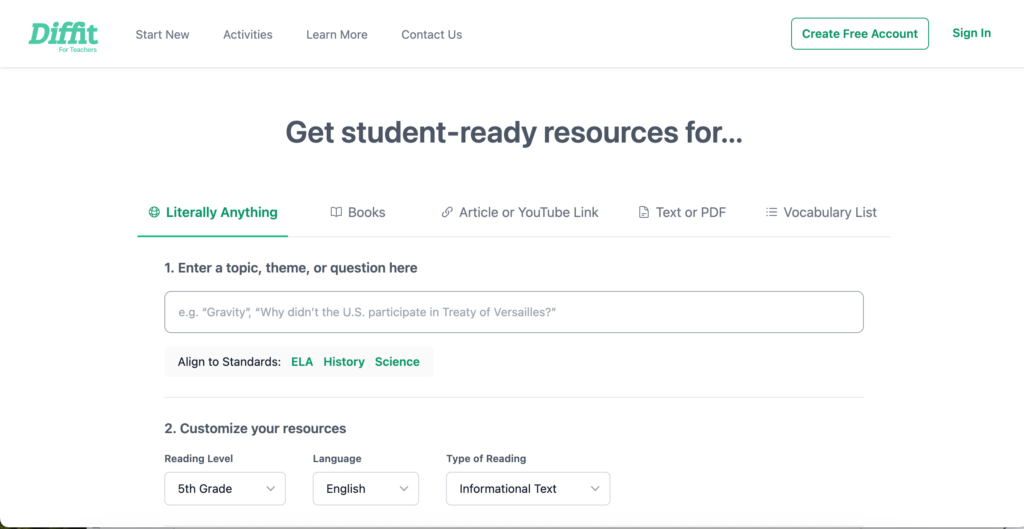
Reinforce Vocabulary with Brisk Teaching
Brisk Teaching is a powerful AI tool that helps reinforce vocabulary in multiple ways. Using the Chrome extension, educators can review any online resource and modify the text level to better match student needs.
Teachers can create quiz questions based on an article, video, or other digital content. Additionally, Brisk’s Text Translation Tool supports dozens of languages, making it a great option for multilingual classrooms. Whether students are reviewing key terms in a science article or analyzing vocabulary in a historical document, Brisk makes content more accessible.
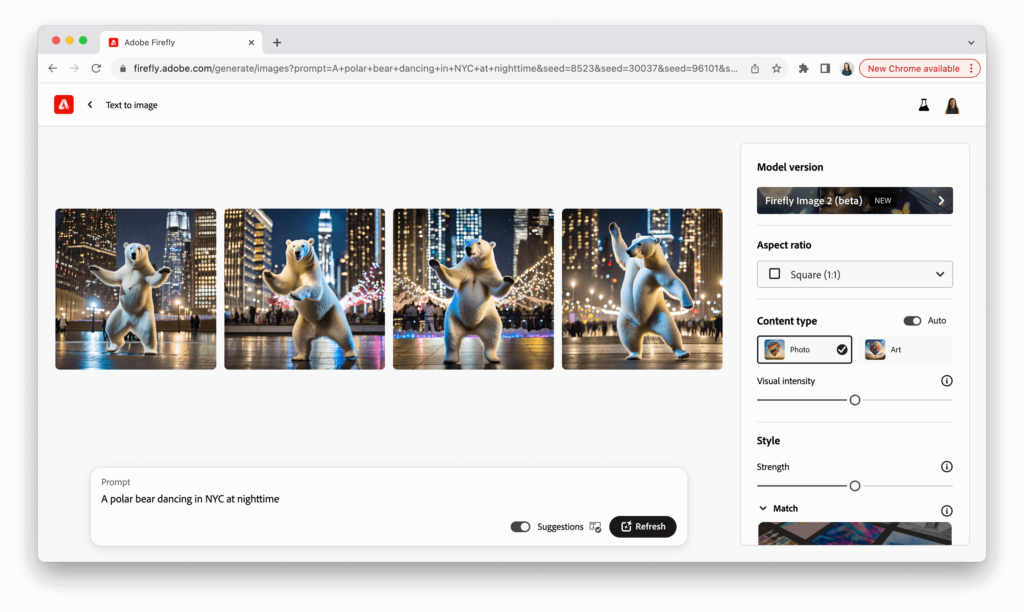
Create AI-Generated Images for Visual Learning
Regular readers of the blog know that I love showcasing ways to make AI-generated images. It’s been a popular session at conferences and events this year, and I’ve created a few resources on the blog on this topic, too. You might have checked out this blog post on “How to Cite AI Images.”
Visual representations of vocabulary words can enhance student understanding. AI-generated images from tools like Adobe Firefly, Canva’s Magic Media, and Gemini help bring abstract terms to life. Teachers can create images to illustrate vocabulary words, or students can generate their own flashcards and posters using tools like Adobe Express. Encouraging students to visualize words through images can improve retention and engagement with new vocabulary.
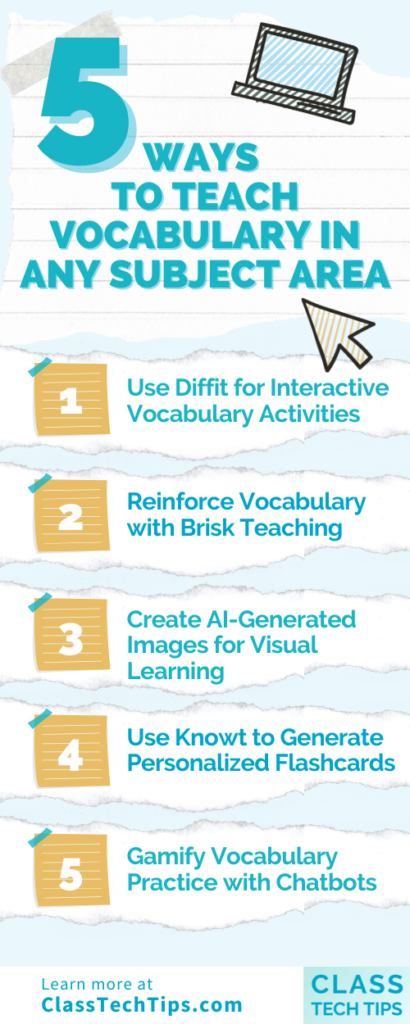
Use Knowt to Generate Personalized Flashcards
Knowt is an excellent tool for creating personalized flashcards to help students practice vocabulary. I had the chance to meet the Knowt team at the TCEA conference and lead a session at their booth. It was wonderful to see both the interest and excitement related to their tool and everything it has to offer students and teachers.
I was impressed with Knowt’s ability to support independent study. Students can quiz themselves and track progress, ensuring they retain key terms. For a limited time, educators can use the code MONICA6 to get six months free of Knowt’s Ultra plan. This tool is a great option for reinforcing vocabulary through spaced repetition and active recall.
Gamify Vocabulary Practice with Chatbots
Chatbots can help generate engaging vocabulary games that make learning fun. Do you have a favorite chatbot? Whether you use ChatGPT, Gemini, Copilot, or another favorite, these tools are fantastic for differentiating instruction.
Teachers can ask chatbots for creative game ideas, such as “I am teaching vocabulary on weather systems to a group of fourth-grade students. Give me ideas for a game that will help students learn the new words and remember what they mean.” Educators can also use chatbots to generate lists of words paired with emojis for a visual learning challenge related to vocabulary instruction. For example, you might use a prompt like, “I want to create flashcards related to fruit and vegetable vocabulary. Make a list of 20 fruits and vegetables and pair each one with an emoji so I can use the emoji as a visual for students as they guess each word.”
Teaching Vocabulary to Students
Teaching vocabulary in engaging and interactive ways helps students build essential language skills that support comprehension across subjects. The interactive activities on this list support vocabulary acquisition and hopefully will bring a little fun to your classroom, too! By incorporating AI tools, flashcards, and gamified activities, educators can create meaningful learning experiences that reinforce vocabulary retention.
Looking for more AI-powered teaching strategies and practical classroom ideas? Check out my quick reference guide, Using AI Chatbots to Enhance Planning and Instruction, published by ASCD and ISTE. This resource includes dozens of prompts for educators to try and is a great alternative to a traditional book. It’s often on sale on Amazon, so be sure to check out my Amazon storefront for the latest deals!
